Are you curious about what Mexican pastries are called and where to find the most authentic treats while exploring Mexico? At gaymexico.net, we understand the importance of experiencing local culture, especially for LGBTQ+ travelers seeking welcoming and inclusive destinations. This guide unveils the delectable world of pan dulce, offering insights into traditional bakeries and must-try pastries, ensuring a sweet and memorable journey. Discover the best spots for panaderías, Mexican sweet bread, and authentic Mexican baking to enhance your travel experience.
1. Unveiling the Sweet World: What is Pan Dulce?
Pan dulce translates to “sweet bread” in Spanish, referring to a wide array of Mexican pastries enjoyed throughout the country. These delightful treats are a staple in Mexican bakeries, or panaderías, and are often enjoyed with coffee or hot chocolate.
What Makes Pan Dulce Unique?
Pan dulce’s unique flavors and textures come from a blend of indigenous and European influences. According to culinary historians, wheat was introduced to Mexico by the Spanish, while the art of bread-making was refined by French bakers who arrived in the 19th century. This fusion led to the diverse range of pastries we know today.
Where Can You Find Authentic Pan Dulce?
For an authentic experience, visit local panaderías throughout Mexico. Cities like Mexico City, Oaxaca, and Guadalajara are renowned for their traditional bakeries. As gaymexico.net highlights, these cities are also known for their vibrant LGBTQ+ scenes, making them ideal destinations for travelers seeking cultural immersion and community connection.
2. A Baker’s Dozen: 15 Must-Try Mexican Pastries
Here are 15 popular pan dulce options you should definitely try during your visit to Mexico:
2.1. Bandera: The Pride of Mexico
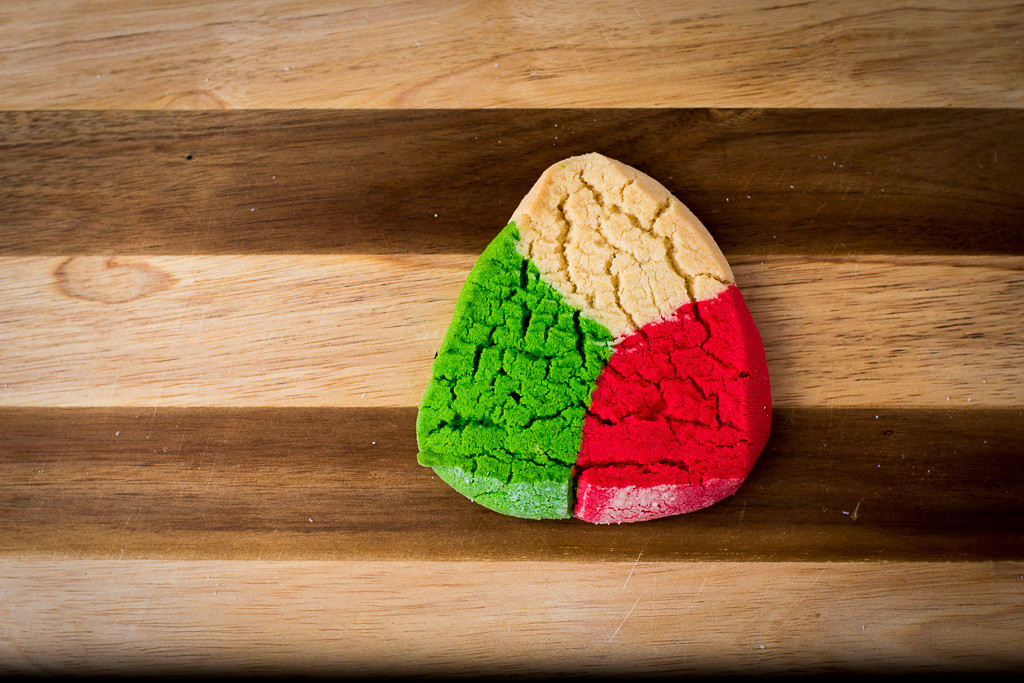 Bandera Mexican flag cookie at La Estrella Bakery Inc
Bandera Mexican flag cookie at La Estrella Bakery Inc
The Bandera is a traditional flag cookie that symbolizes the Mexican flag. Its slightly shortbread-like taste makes it a delightful treat to start your pastry journey.
2.2. Chamuco: A Cinnamon Swirl
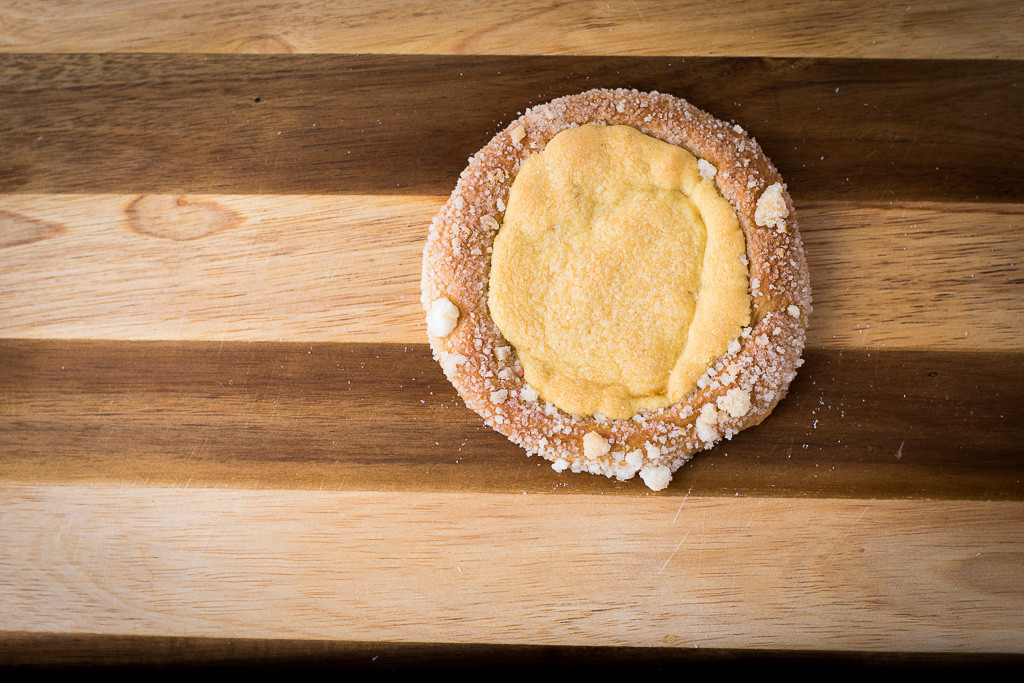 Chamuco at La Estrella Bakery Inc
Chamuco at La Estrella Bakery Inc
The Chamuco is crafted from Concha ingredients, featuring sugar, wheat flour, and cinnamon. Unlike the fluffy Concha, the Chamuco is flat and sometimes filled with cream cheese or fruit.
2.3. Cochito: The Little Piggy
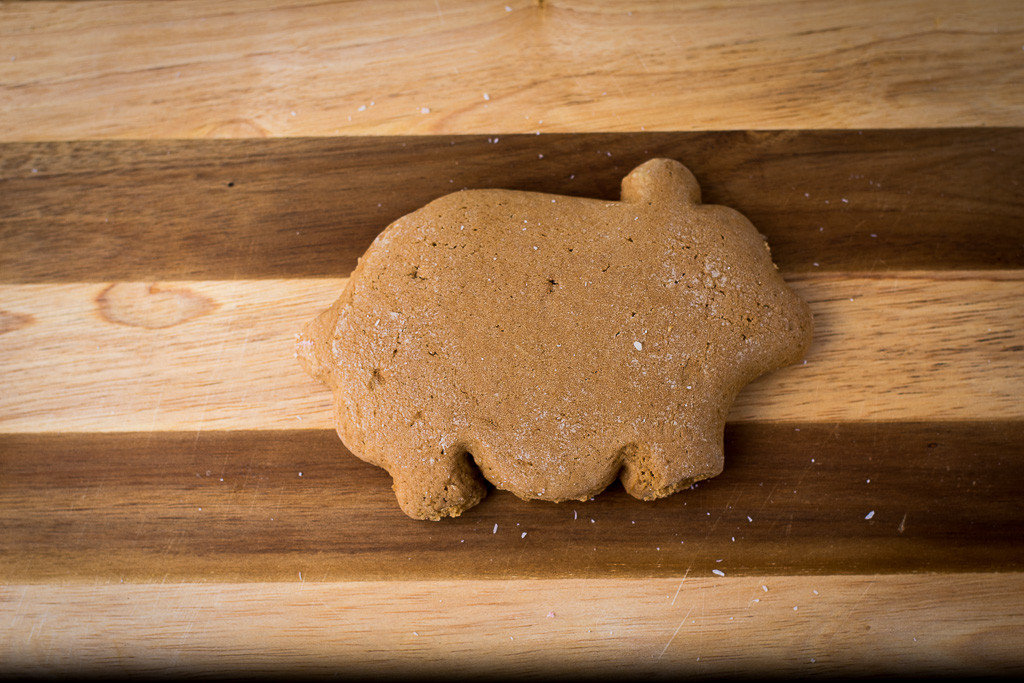 Cochito gingerbread cookie at La Estrella Bakery Inc
Cochito gingerbread cookie at La Estrella Bakery Inc
The Cochito, or little piggy, is a gingerbread cookie shaped like a pig but flavored with molasses and cinnamon instead of ginger. It’s also known as Cochino, Marranito, or Puerquito in various regions.
2.4. Concha: The Seashell Sweetheart
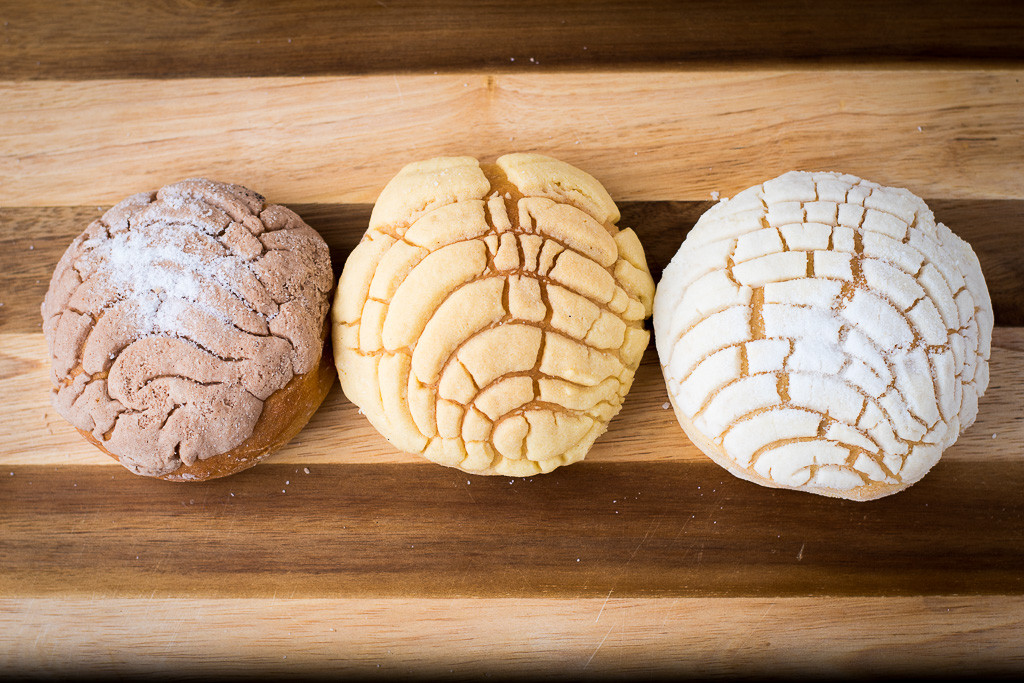 Concha at La Estrella Bakery Inc
Concha at La Estrella Bakery Inc
The Concha, Spanish for seashell, is arguably the most popular pan dulce. This sweet bread features a cookie-like topping flavored with vanilla or chocolate and sprinkled with cinnamon or sugar.
2.5. Coyota: A Taste of Sonora
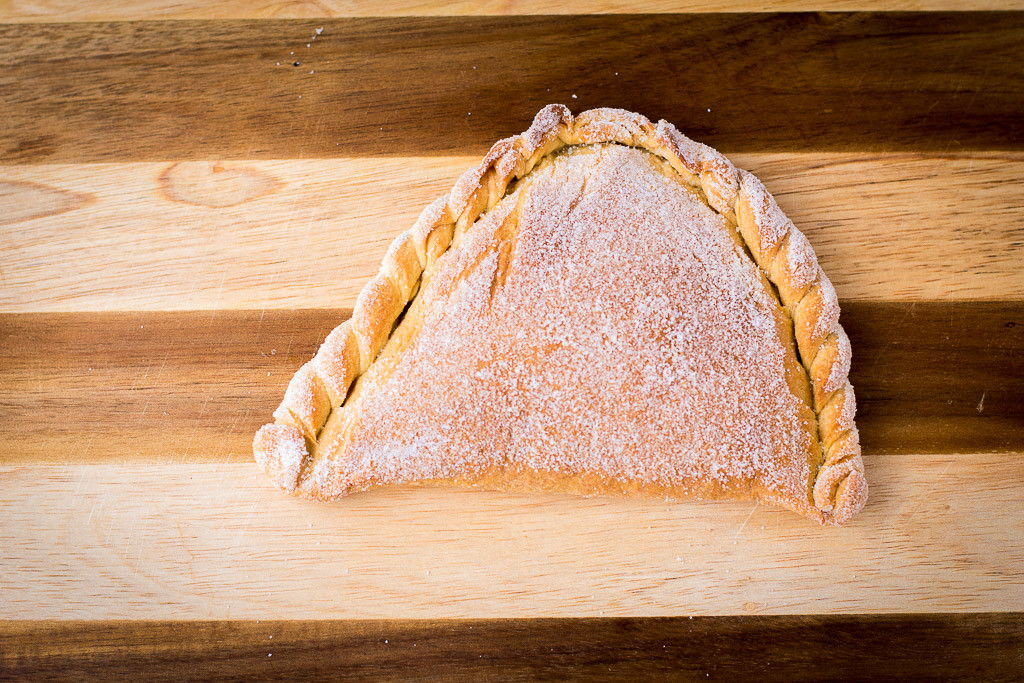 Coyota at La Estrella Bakery Inc
Coyota at La Estrella Bakery Inc
The Coyota is a cinnamon cookie made from whole wheat flour and filled with Piloncillo, Mexican brown sugar. Originating from Sonora, Mexico, it’s often enjoyed with coffee or savory dishes.
2.6. Empanada: A Filled Turnover
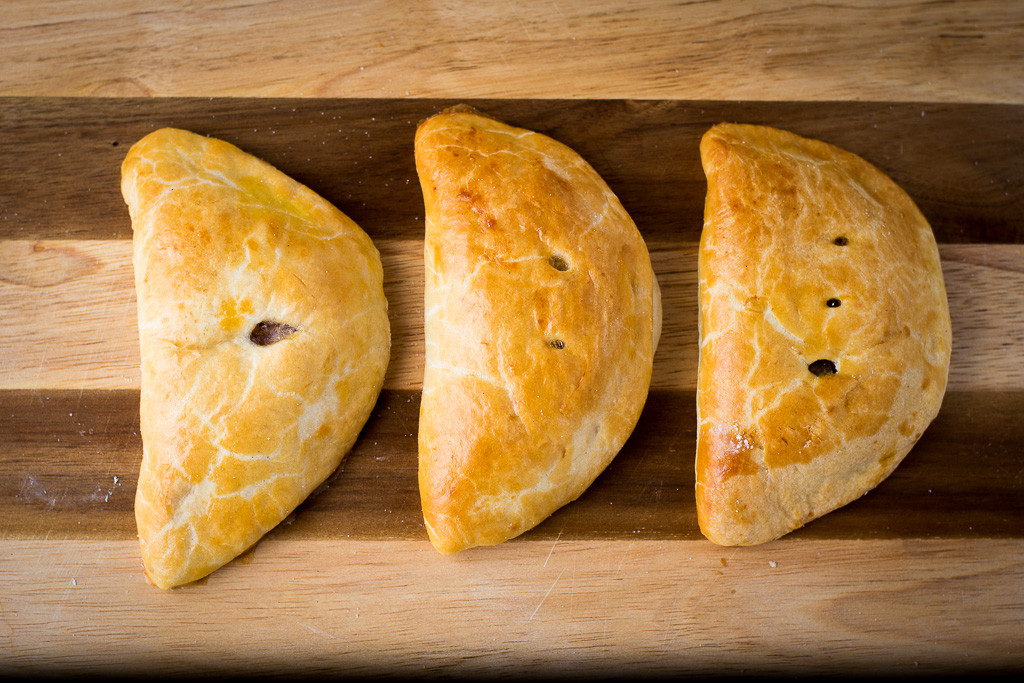 Empanadas at La Estrella Bakery Inc
Empanadas at La Estrella Bakery Inc
Empanadas are soft fruit-filled turnovers, with popular fillings including apple, pineapple, and pumpkin. These sweet pastries are a delightful treat, especially when warmed up with ice cream.
2.7. Galletas de Boda: Wedding Delights
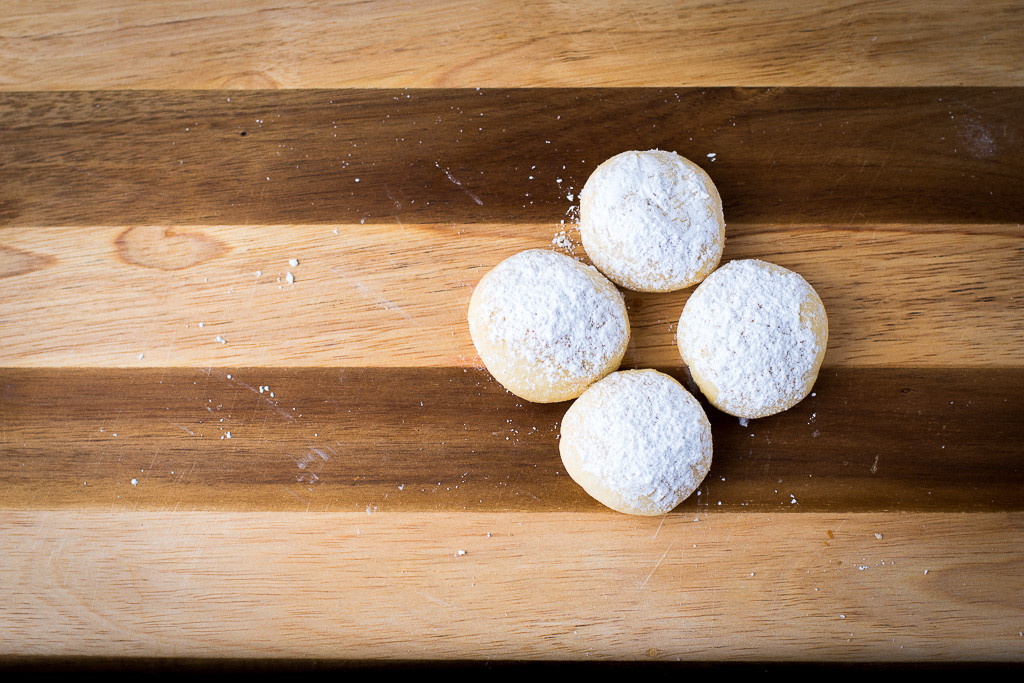 Galletas de Boda at La Estrella Bakery Inc
Galletas de Boda at La Estrella Bakery Inc
Galletas de Boda are Mexican wedding cookies, often seen at wedding celebrations. These smaller versions of Mexican Polvoron cookies are topped with confectioners’ sugar.
2.8. Gallina: The Cream-Filled Chick
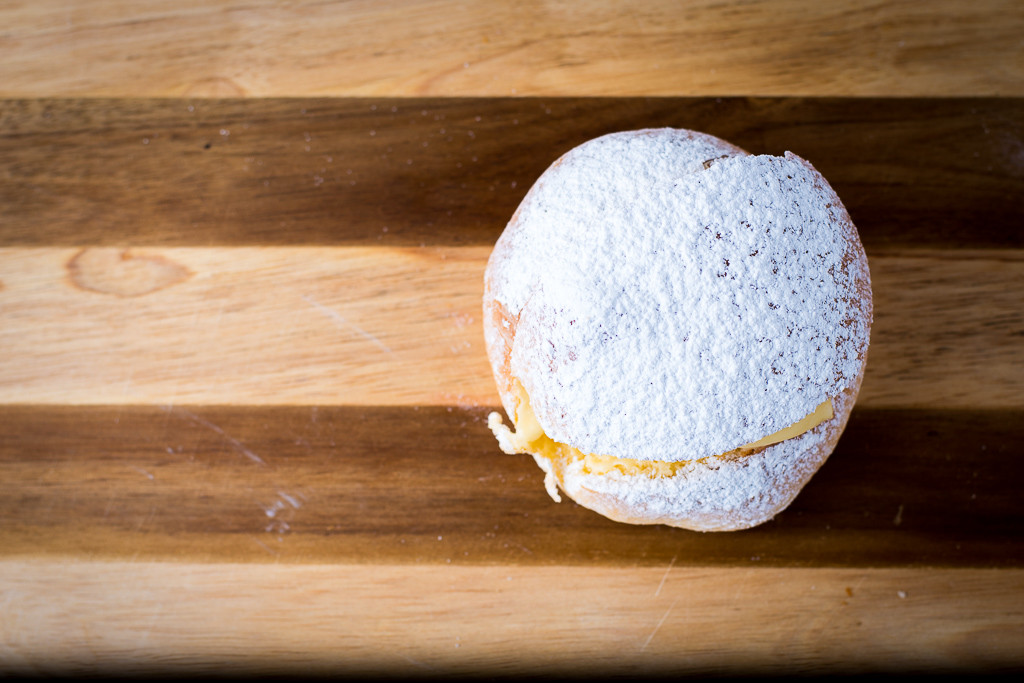 Gallina at La Estrella Bakery Inc
Gallina at La Estrella Bakery Inc
The Gallina, Spanish for chick, is a traditional pan dulce roll filled with vanilla creme. This cinnamon bread is topped with powdered sugar, providing a sweet and creamy delight.
2.9. Nino Envuelto: The Jelly Roll
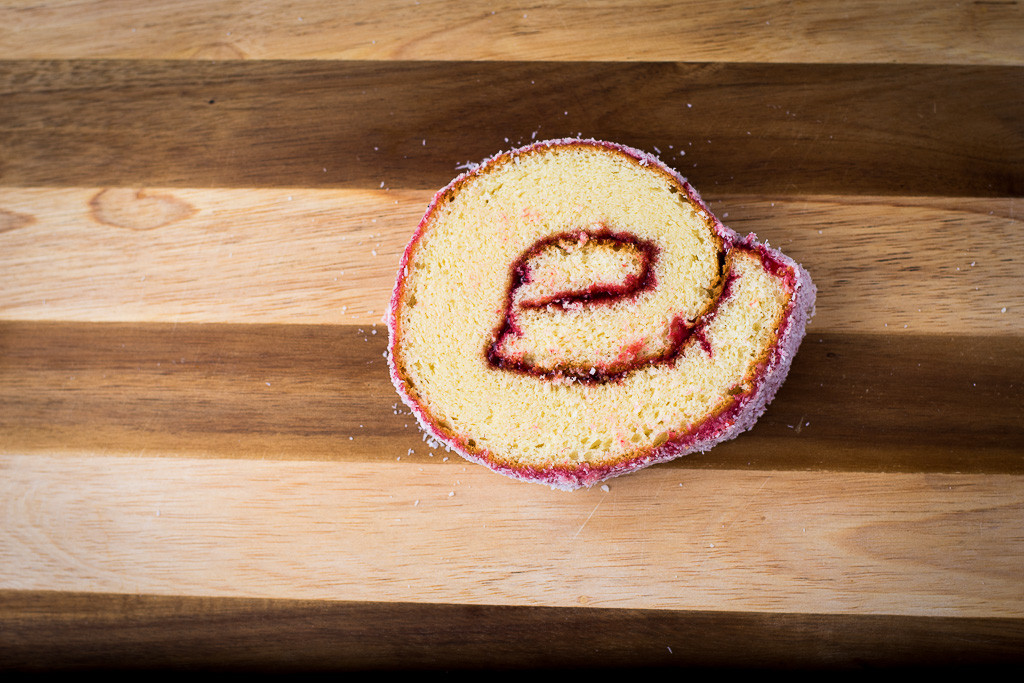 Nino Envuelto at La Estrella Bakery Inc
Nino Envuelto at La Estrella Bakery Inc
Nino Envuelto translates to wrapped-up baby and is essentially a jelly roll. La Estrella’s version features a soft, spongey cake with strawberry filling and coconut shavings.
2.10. Oreja: The Elephant Ear
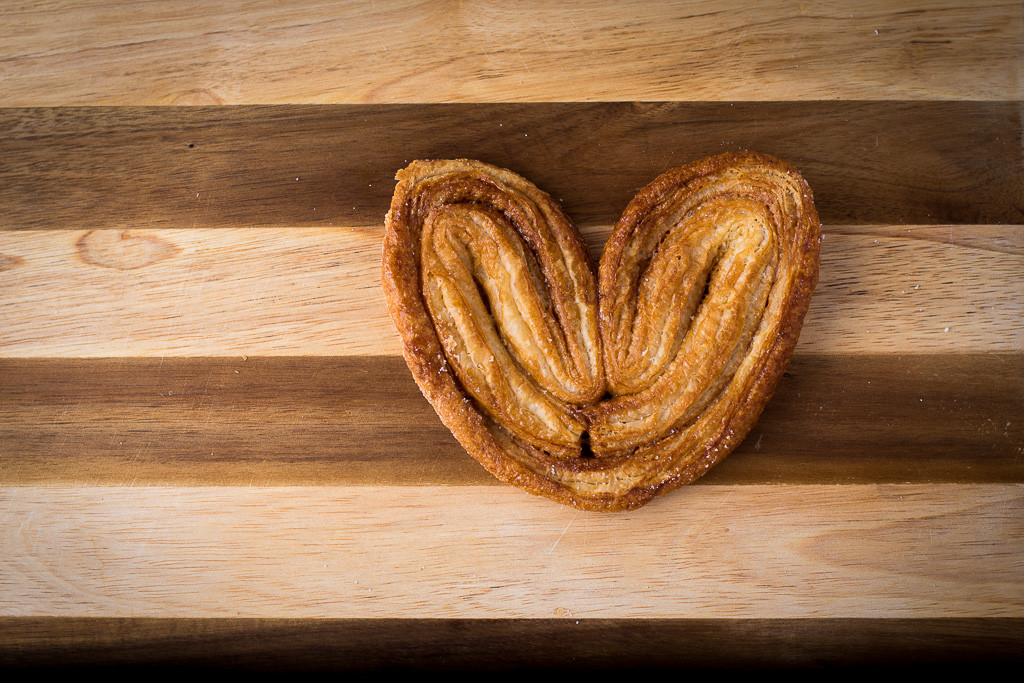 Oreja at La Estrella Bakery Inc
Oreja at La Estrella Bakery Inc
Oreja means ear in Spanish, but it’s often referred to as elephant ear. This flaky pastry is slightly sweet and sticky with a crispy texture, perfect with coffee or milk.
2.11. Pan Fino – Elote: Corn Cob Delight
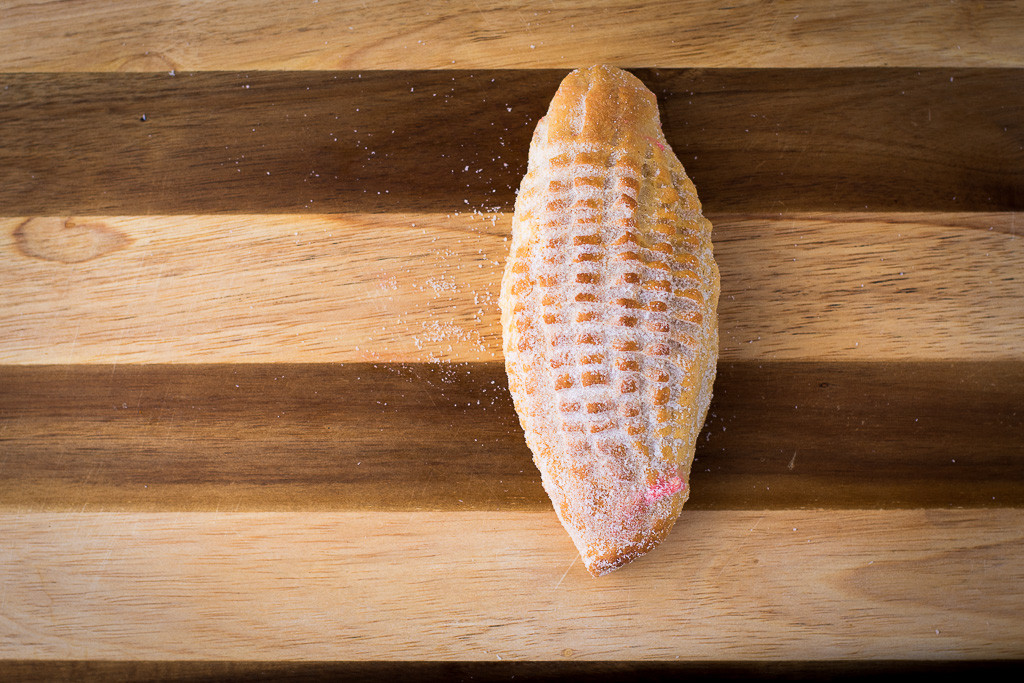 Pan Fino at La Estrella Bakery Inc
Pan Fino at La Estrella Bakery Inc
Pan Fino, meaning fine bread, comes in various designs. The Elote version is shaped like a corn cob and filled with a sugar paste made from sugar, vanilla, water, flour, and shortening.
2.12. Pan Fino – Cuerno: The Bull’s Horn
 Pan Fino at La Estrella Bakery Inc
Pan Fino at La Estrella Bakery Inc
The Cuerno, Spanish for bull’s horn, is a popular Pan Fino choice. This soft bread offers a sweet taste and a chewy texture, similar to the middle of a cinnamon roll.
2.13. Pan Fino – Leo: The Log
 Pan Fino at La Estrella Bakery Inc
Pan Fino at La Estrella Bakery Inc
The Leo, Spanish for log, is another version of Pan Fino. Mexican bakers take pride in crafting these detailed pastries, showcasing their experience and skill.
2.14. Pan Fino – Pierna: The Leg
 Pan Fino at La Estrella Bakery Inc
Pan Fino at La Estrella Bakery Inc
The Pierna, Spanish for leg, is the final member of the Pan Fino family. Made with the same ingredients as the other Pan Fino pastries, it features an egg wash instead of a sugar coat.
2.15. Yoyo: The Sweet Sandwich
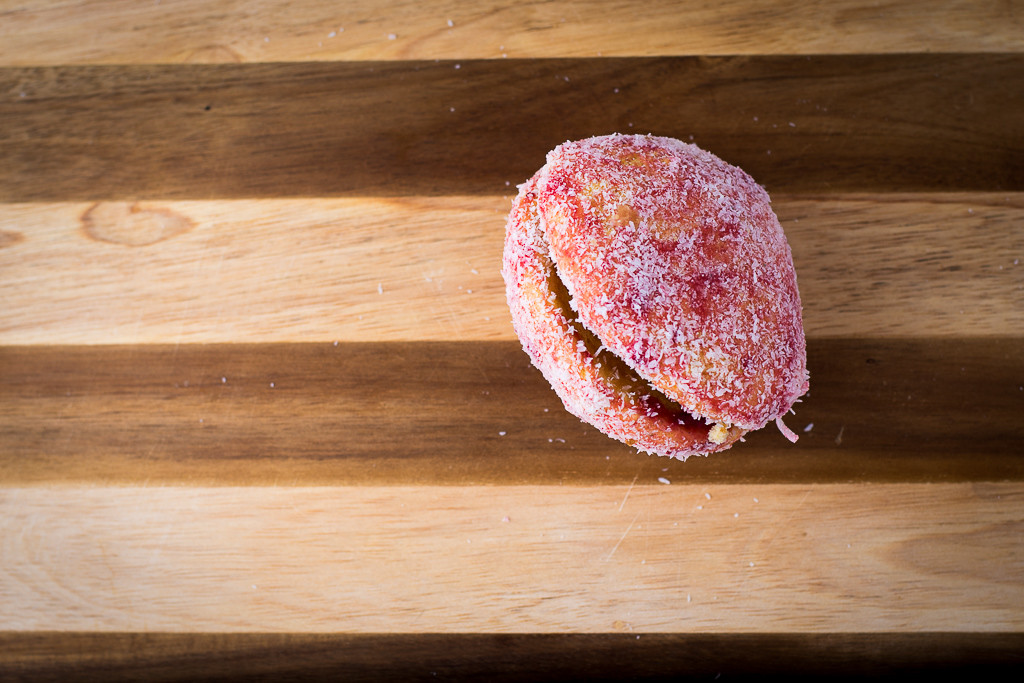 Yoyo at La Estrella Bakery Inc
Yoyo at La Estrella Bakery Inc
The Yoyo is a sandwich of two sweet breads with apple filling, coated with strawberry jam and coconut shavings. In Mexico City, it’s called Beso, meaning kiss, because the two breads are connected.
3. The Cultural Significance of Pan Dulce
Pan dulce is more than just a sweet treat; it’s a symbol of Mexican culture and tradition. According to a study by the University of Gastronomic Sciences, panaderías serve as community hubs, where people gather to share stories and enjoy these delectable pastries.
Pan Dulce and Celebrations
Pan dulce plays a significant role in Mexican celebrations. For example, Pan de Muerto is a special bread prepared for Día de los Muertos (Day of the Dead), honoring deceased loved ones.
How Pan Dulce Reflects Mexican Identity
The diverse range of pan dulce reflects Mexico’s rich cultural heritage. Each pastry tells a story of historical influences and regional traditions, making them an essential part of the Mexican identity.
4. Finding LGBTQ+-Friendly Panaderías in Mexico
As you explore Mexico’s culinary scene, finding welcoming and inclusive spaces is essential. At gaymexico.net, we understand this need and recommend seeking out panaderías in LGBTQ+-friendly neighborhoods.
Recommended LGBTQ+-Friendly Neighborhoods
- Mexico City’s Zona Rosa: This vibrant neighborhood is known for its inclusive atmosphere and diverse culinary offerings.
- Puerto Vallarta’s Romantic Zone: A popular destination for LGBTQ+ travelers, offering a range of welcoming establishments.
- Guadalajara’s Chapultepec: This area boasts a thriving arts scene and numerous LGBTQ+-friendly cafes and bakeries.
Tips for Identifying Welcoming Panaderías
- Look for rainbow flags or LGBTQ+ signage: These symbols often indicate a welcoming and inclusive environment.
- Read online reviews: Check for mentions of LGBTQ+ friendliness in customer reviews.
- Ask locals: Don’t hesitate to ask for recommendations from LGBTQ+ community members.
5. How to Order Pan Dulce Like a Local
To fully immerse yourself in the pan dulce experience, it’s helpful to know some basic Spanish phrases and ordering etiquette.
Useful Spanish Phrases
- “¿Qué me recomienda?” (What do you recommend?)
- “¿Cuánto cuesta?” (How much does it cost?)
- “Quisiera [nombre del pan dulce], por favor.” (I would like [name of the pan dulce], please.)
- “Gracias, está delicioso.” (Thank you, it’s delicious.)
Ordering Etiquette
- Be polite and patient: Mexican bakeries can be busy, so be mindful of other customers and staff.
- Use “usted” when addressing older adults: This shows respect and is customary in Mexican culture.
- Pay with cash: While some bakeries accept credit cards, it’s always a good idea to have cash on hand.
6. Pan Dulce Around the World
While pan dulce is a Mexican staple, similar pastries can be found in other parts of the world, each with its unique twist.
Comparisons to Other Pastries
- France: Palmiers are similar to Orejas, featuring flaky, caramelized pastry.
- Spain: Ensaimadas are sweet, spiral-shaped pastries often compared to Pan de Huevo.
- Italy: Biscotti are twice-baked cookies that share similarities with Galletas de Boda.
Global Adaptations of Pan Dulce
In the United States, many Mexican bakeries offer pan dulce with localized flavors and ingredients. This fusion creates exciting new variations that appeal to diverse tastes.
7. Making Your Own Pan Dulce: Recipes and Tips
If you’re feeling adventurous, why not try making your own pan dulce at home? Here are some popular recipes and tips to get you started.
Concha Recipe
Ingredients:
- 4 cups all-purpose flour
- 1 cup sugar
- 1 teaspoon salt
- 1 package active dry yeast
- ½ cup warm milk
- 4 eggs
- ½ cup butter, softened
Instructions:
- Combine flour, sugar, and salt in a bowl.
- Dissolve yeast in warm milk and add to the flour mixture.
- Add eggs and butter, then knead until smooth.
- Let rise for 1 hour.
- Shape into rolls and top with Concha topping (recipe below).
- Bake at 350°F for 15-20 minutes.
Concha Topping Recipe
Ingredients:
- ½ cup all-purpose flour
- ½ cup powdered sugar
- ¼ cup shortening
- ½ teaspoon vanilla extract
Instructions:
- Combine all ingredients in a bowl.
- Knead until smooth.
- Roll out and cut into circles to top the rolls.
Tips for Success
- Use high-quality ingredients: This will enhance the flavor and texture of your pan dulce.
- Knead the dough thoroughly: This will develop the gluten and create a soft, fluffy pastry.
- Allow the dough to rise properly: This will ensure a light and airy texture.
8. Pan Dulce and Health: Nutritional Information
While pan dulce is a delicious treat, it’s essential to be mindful of its nutritional content.
Nutritional Facts
- Calories: Pan dulce can range from 200 to 500 calories per serving.
- Sugar: These pastries are typically high in sugar, so it’s best to consume them in moderation.
- Fat: Pan dulce often contains butter or shortening, contributing to its fat content.
Tips for Healthier Consumption
- Choose smaller portions: Opt for mini versions or share a pastry with a friend.
- Balance with healthy foods: Enjoy pan dulce as part of a balanced diet that includes fruits, vegetables, and lean protein.
- Look for whole grain options: Some bakeries offer pan dulce made with whole wheat flour, which provides more fiber.
9. The Future of Pan Dulce: Innovations and Trends
The world of pan dulce is constantly evolving, with bakers experimenting with new flavors, ingredients, and techniques.
Emerging Trends
- Vegan Pan Dulce: Many bakeries are now offering vegan options, using plant-based ingredients to create delicious pastries.
- Gluten-Free Pan Dulce: With the rise of gluten intolerance, gluten-free pan dulce is becoming increasingly popular.
- Fusion Flavors: Bakers are incorporating international flavors into pan dulce, such as matcha, chai, and Nutella.
The Role of Social Media
Social media plays a significant role in promoting pan dulce, with Instagram and TikTok showcasing the artistry and diversity of these pastries. This exposure helps bakeries reach new audiences and stay relevant in a competitive market.
10. Supporting Local Panaderías in Mexico
When traveling in Mexico, supporting local panaderías is a great way to experience authentic culture and contribute to the local economy.
Benefits of Supporting Local Businesses
- Preserving Traditions: Local panaderías often use traditional recipes and techniques, helping to preserve Mexican culinary heritage.
- Boosting the Economy: Supporting local businesses helps create jobs and stimulate economic growth in the community.
- Creating Community: Panaderías serve as community hubs, where people gather to socialize and connect.
How to Find and Support Local Panaderías
- Ask locals for recommendations: They can point you to hidden gems and family-owned bakeries.
- Visit markets and festivals: These events often feature local vendors selling pan dulce.
- Leave positive reviews: Share your experiences online to help other travelers discover these authentic bakeries.
11. Experiencing Día de Muertos with Pan de Muerto
Día de Muertos (Day of the Dead) is a significant Mexican holiday celebrated from October 31 to November 2. Pan de Muerto (Bread of the Dead) is a special type of pan dulce prepared for this occasion, symbolizing the connection between the living and the deceased.
The Significance of Pan de Muerto
Pan de Muerto is typically adorned with bone-shaped decorations and dusted with sugar. It is often placed on altars (ofrendas) to honor deceased loved ones and is believed to nourish their spirits as they return to visit the living.
Where to Find Pan de Muerto
During Día de Muertos, Pan de Muerto is widely available in panaderías, markets, and supermarkets throughout Mexico. Some bakeries even offer regional variations with unique flavors and decorations.
Participating in Día de Muertos Celebrations
To fully experience Día de Muertos, consider visiting local cemeteries, attending cultural events, and indulging in Pan de Muerto. It’s a time to honor and remember loved ones while celebrating Mexican culture.
12. Pan Dulce in LGBTQ+ Culture
Pan dulce, like many cultural traditions, can find special meaning and expression within the LGBTQ+ community.
Pride and Inclusivity
Some LGBTQ+ bakeries create pan dulce with rainbow colors or decorate them with symbols of pride, promoting inclusivity and visibility. These pastries can become symbols of acceptance and celebration within the community.
Community Gatherings
LGBTQ+ community events and gatherings often feature pan dulce as a way to share culture and build connections. Sharing these sweet treats can foster a sense of belonging and camaraderie.
Supporting LGBTQ+ Bakeries
Supporting LGBTQ+-owned bakeries is a way to promote inclusivity and contribute to the economic empowerment of the community. Look for bakeries that are openly supportive and welcoming to all.
13. Traveling Safely and Respectfully as an LGBTQ+ Person in Mexico
While Mexico is generally becoming more accepting of LGBTQ+ individuals, it’s essential to be aware of local customs and laws to ensure a safe and respectful travel experience.
Understanding Local Laws and Customs
- Same-sex marriage: Legal in all 32 Mexican states.
- Discrimination: While there are federal anti-discrimination laws, enforcement can vary by region.
- Public displays of affection: Generally accepted in larger cities and tourist areas, but may be less welcome in more conservative regions.
Tips for Safe Travel
- Research your destination: Learn about the local LGBTQ+ scene and any potential safety concerns.
- Be aware of your surroundings: Pay attention to local customs and adjust your behavior accordingly.
- Travel with friends or in groups: This can provide added safety and support.
- Use LGBTQ+-friendly resources: Consult websites and organizations that provide information and support for LGBTQ+ travelers.
Resources for LGBTQ+ Travelers in Mexico
- gaymexico.net: Your go-to source for LGBTQ+ travel information in Mexico.
- ILGA World: Provides information on LGBTQ+ rights and laws worldwide.
- Local LGBTQ+ organizations: Connect with local groups for support and resources.
14. Gaymexico.net: Your Guide to LGBTQ+ Travel in Mexico
At gaymexico.net, we are dedicated to providing comprehensive and up-to-date information for LGBTQ+ travelers in Mexico. Our website features:
Detailed Travel Guides
Explore our detailed travel guides to Mexico’s most LGBTQ+-friendly cities and regions. Discover the best places to stay, eat, and play, all while feeling safe and welcome.
Event Listings
Stay informed about the latest LGBTQ+ events and festivals in Mexico. From Pride celebrations to cultural gatherings, we’ve got you covered.
Community Connections
Connect with the local LGBTQ+ community through our forums and social media channels. Share your experiences, ask questions, and make new friends.
Safety Tips and Resources
Access essential safety tips and resources to ensure a worry-free travel experience. We provide information on local laws, customs, and emergency contacts.
15. Sweet Endings: Embracing Mexican Culture Through Pan Dulce
As you conclude your journey through the world of pan dulce, we hope you’ve gained a deeper appreciation for Mexican culture and cuisine. Pan dulce is more than just a sweet treat; it’s a symbol of tradition, community, and identity.
Encouragement to Explore Further
We encourage you to continue exploring the diverse culinary offerings of Mexico. From savory street food to gourmet dining experiences, there’s something for every palate.
A Call to Action
Visit gaymexico.net today to discover more LGBTQ+-friendly destinations and experiences in Mexico. Connect with the community, plan your dream vacation, and embrace the beauty and diversity of Mexican culture.
Contact Us
Address: 3255 Wilshire Blvd, Los Angeles, CA 90010, United States
Phone: +1 (213) 380-2177
Website: gaymexico.net
FAQ: Your Pan Dulce Questions Answered
1. What exactly is pan dulce?
Pan dulce is a term for a variety of Mexican pastries, often sweet and enjoyed with coffee or hot chocolate.
2. Where can I find the most authentic pan dulce?
Visit local panaderías in cities like Mexico City, Oaxaca, and Guadalajara for an authentic experience.
3. What is the most popular type of pan dulce?
The Concha is arguably the most popular type of pan dulce in Mexico.
4. Is pan dulce only eaten in Mexico?
While pan dulce is a Mexican staple, similar pastries can be found in other parts of the world with their own unique twists.
5. What is Pan de Muerto and when is it eaten?
Pan de Muerto is a special bread prepared for Día de los Muertos (Day of the Dead), typically eaten from October 31 to November 2.
6. Are there any vegan options for pan dulce?
Yes, many bakeries are now offering vegan pan dulce, using plant-based ingredients.
7. How can I order pan dulce like a local?
Learn basic Spanish phrases and be polite and patient when ordering at panaderías.
8. What is the cultural significance of pan dulce?
Pan dulce is a symbol of Mexican culture and tradition, reflecting historical influences and regional customs.
9. How can I support local panaderías in Mexico?
Ask locals for recommendations, visit markets and festivals, and leave positive reviews online.
10. Is Mexico a safe place for LGBTQ+ travelers?
While Mexico is generally becoming more accepting, it’s essential to be aware of local customs and laws to ensure a safe and respectful travel experience.